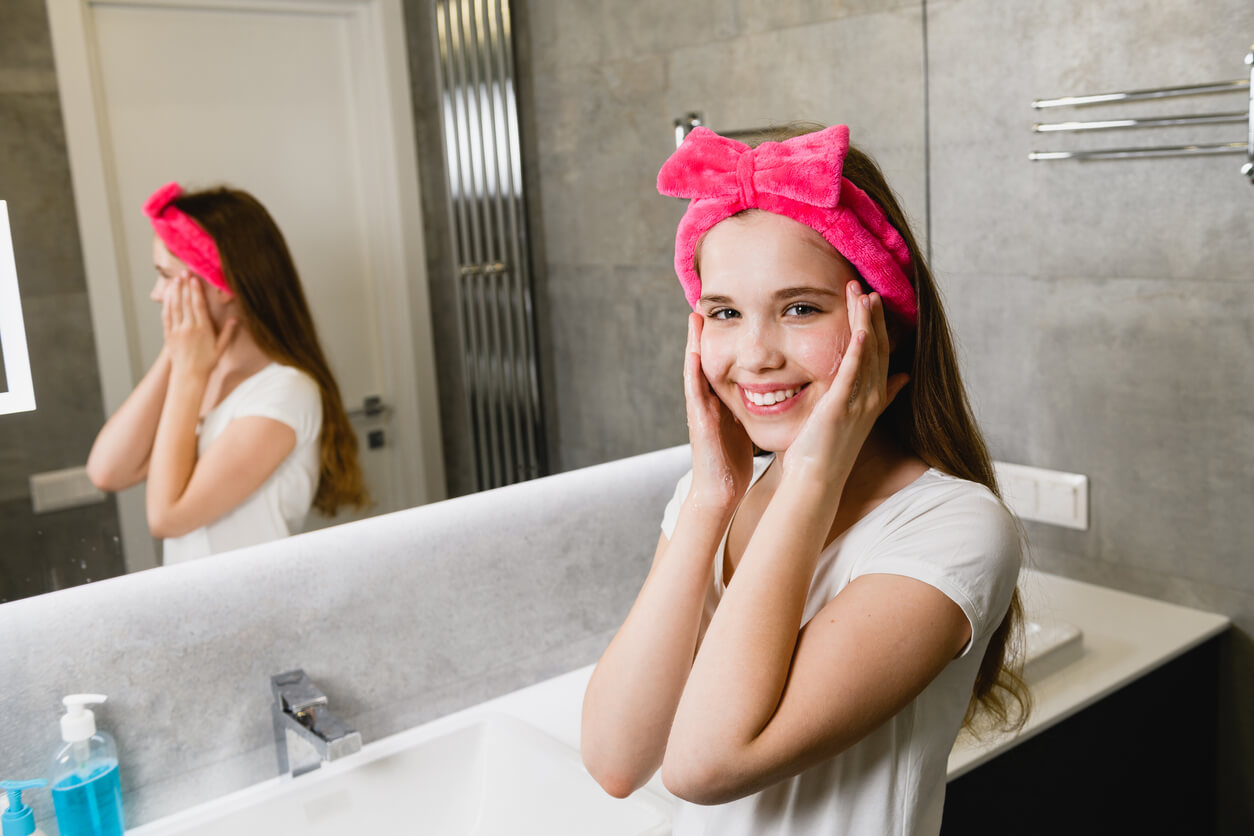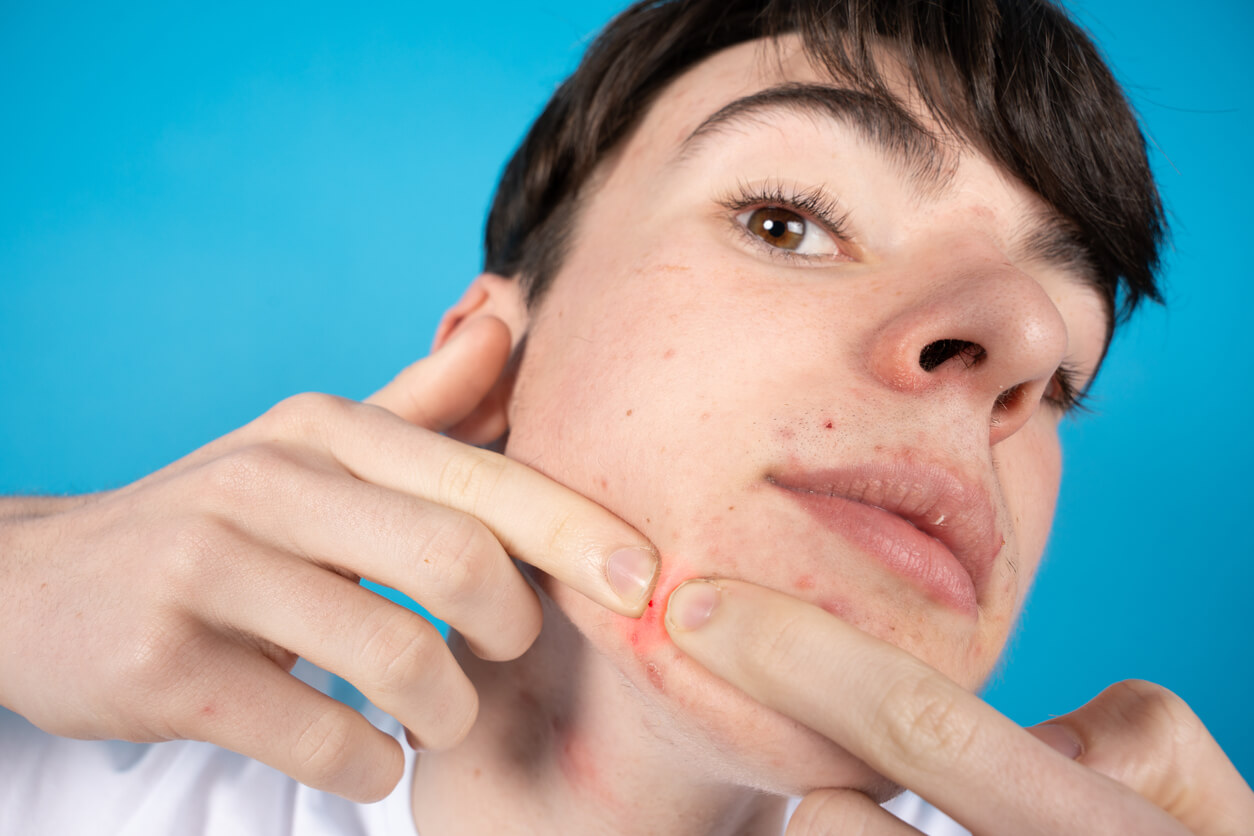Is It Possible to Prevent Acne During Adolescence?


Written and verified by the dermatologist Maria del Carmen Hernandez
Acne usually makes its first appearance in adolescence, when the body increases the production of androgens. This hormone is responsible for stimulating the production of sebum, which together with dead cells and hairs, causes inflammation. Keep reading to find out if it’s possible to prevent acne during adolescence.
Find out if it’s possible to prevent acne during adolescence
The cutaneous manifestations of acne can be traumatic for those who suffer from it, as, in many cases, they affect self-esteem and limit interpersonal relationships. Therefore, here are some guidelines to prevent it.
Daily facial cleansing
Daily facial cleansing is one of the most important steps in any skincare routine. In fact, it’s best to get into the habit of doing it in the morning and at the end of the day. In this way, the skin surface is cleansed of makeup, dirt, and dead cells with delicate circular movements.
The choice of a gentle facial cleanser greatly influences the desired and achieved effects on the skin. Therefore, those that are astringent and cause mild exfoliation are ideal.
Use special products
Always use cosmetic products that have been recommended by your dermatologist. This is because not all skin is equally delicate or sensitive. In other words, some tend to be more reactive than others.

Benzoyl peroxide
This is available in gels, lotions, or rinses and helps to eliminate bacteria from the skin surface, unblock sebaceous glands, and reduce inflammation of papules or pustules.
The product is available in concentrations from 2.5% to 10% and shouldn’t be applied in excess or rubbed too much into the skin. In turn, to prevent side effects such as irritation, redness, and dryness, the instructions on the package insert should be followed.
Moisturizing products
Moisturizing creams or emulsions help to keep the skin surface moisturized. However, the vast majority of them contain synthetic fragrances, oils, and other components that can cause irritation and acne. Therefore, fragrance-free, non-comedogenic moisturizers are recommended after cleansing or when the skin feels dry and dehydrated.
Also read: The Effects of Acne on Self-Esteem
Taking care of your diet
The intake of high levels of omega-6 fatty acids has been associated with the development of inflammatory acne. There are even studies that claim that sebum production increases with the consumption of fats or carbohydrates in the diet.
There are foods that have a strong association with the development of acne. Some of them are the following:
- Dairy products
- Chocolate
- Foods that are in iodine
According to a review carried out in 2010 and published by the Journal of the American Academy of Dermatology, a diet based on foods with a high glycemic index can be a causative factor of acne.
These types of food products are potato chips, soft drinks, and white flour-based products, which are also less nutritious than those with a low glycemic index.
Always use clean towels and sheets
All items that are in contact with the skin should be sanitized or sterilized to avoid contamination with certain germs. If possible, a special towel should be used for the face, as the rest of the body has different microbacteria that can contaminate the face.
At the same time, the pillowcase is in daily contact with the face. For this reason, it’s important to change it every week and opt for soft fabrics, such as silk, which contribute to healthy and smooth skin.
You may be interested in: Food and Acne: What You Eat Matters

Keep your hands away from your face
Although hand washing has increased consistently, they’re a part of the body that gets the dirtiest, due to the fact that they come into contact with all the elements outside. Therefore, when touching the face or trying to remove pimples or blackheads, all the bacteria accumulated on the surface of the hand are transferred to the skin of the face.
Perform treatments to prevent acne
Acne treatments have been updated over time. Nowadays, there are different therapeutic options to take into consideration based on the severity of the condition.
It’s important to see a dermatologist to determine if it’s necessary to start a topical or oral treatment or resort to the help of aesthetic procedures, such as some type of laser or peeling.
Prevention is the best medicine
Adolescence, along with puberty, are ideal times to start with skincare and hygiene routines. Of course, it’s always best to be advised by specialized personnel.
At this stage of life, there are hormonal changes in the body that can be compensated with hygienic and dietary measures to prevent skin lesions.
All cited sources were thoroughly reviewed by our team to ensure their quality, reliability, currency, and validity. The bibliography of this article was considered reliable and of academic or scientific accuracy.
- MACDONALD I. CHANGES IN THE FATTY ACID COMPOSITION OF SEBUM ASSOCIATED WITH HIGH CARBOHYDRATE DIETS. Nature. 1964 Sep 5;203:1067-8. doi: 10.1038/2031067b0. PMID: 14223079.
- Adebamowo CA, Spiegelman D, Danby FW, Frazier AL, Willett WC, Holmes MD. High school dietary dairy intake and teenage acne. J Am Acad Dermatol. 2005 Feb;52(2):207-14. doi: 10.1016/j.jaad.2004.08.007. PMID: 15692464.
-
InformedHealth.org [Internet]. Cologne, Germany: Institute for Quality and Efficiency in Health Care (IQWiG); 2006-. Acne: Overview. 2013 Jan 16 [Updated 2019 Sep 26]. Available from: https://www.ncbi.nlm.nih.gov/books/NBK279211/
This text is provided for informational purposes only and does not replace consultation with a professional. If in doubt, consult your specialist.








